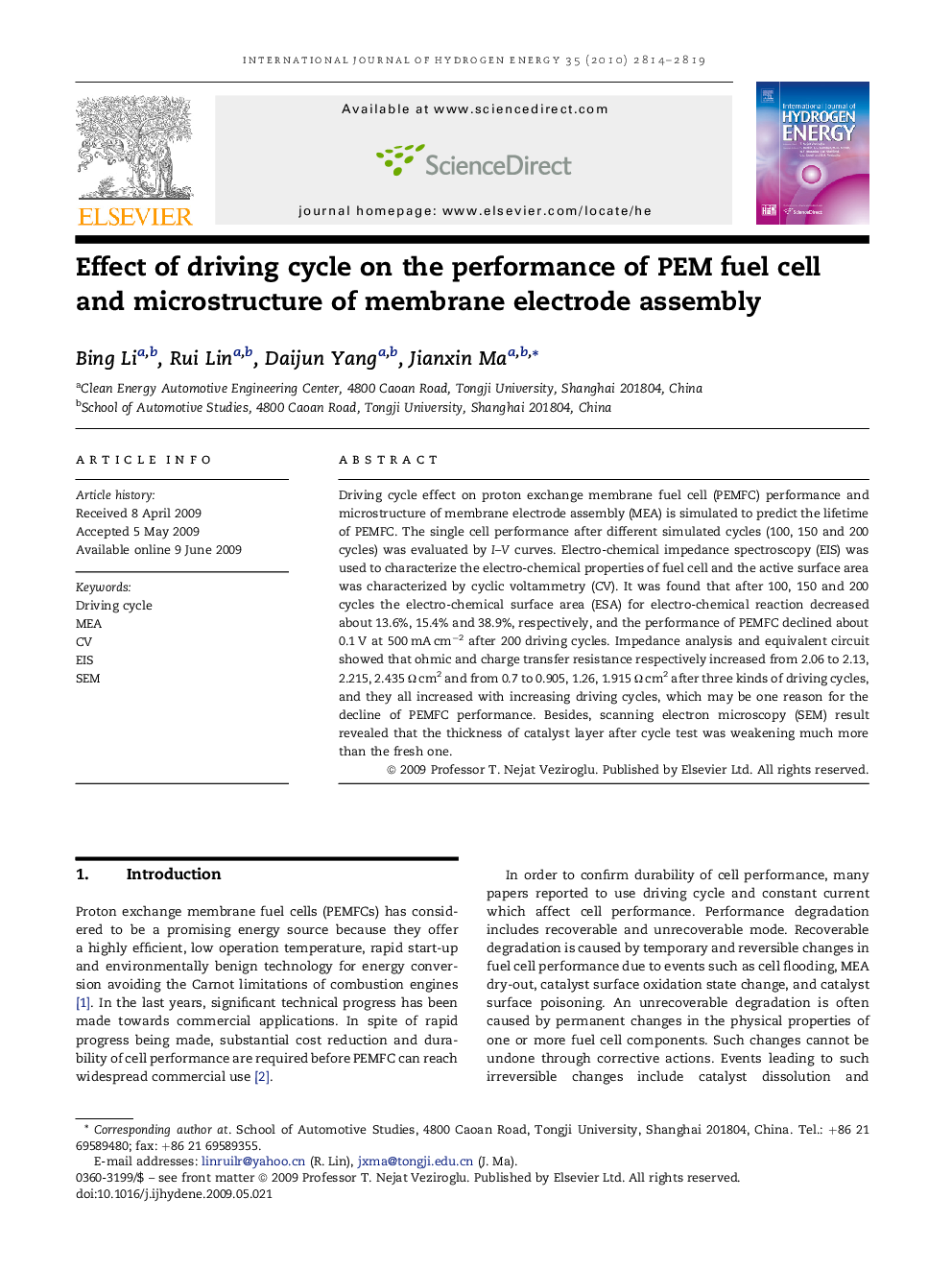| Article ID | Journal | Published Year | Pages | File Type |
|---|---|---|---|---|
| 1273262 | International Journal of Hydrogen Energy | 2010 | 6 Pages |
Driving cycle effect on proton exchange membrane fuel cell (PEMFC) performance and microstructure of membrane electrode assembly (MEA) is simulated to predict the lifetime of PEMFC. The single cell performance after different simulated cycles (100, 150 and 200 cycles) was evaluated by I–V curves. Electro-chemical impedance spectroscopy (EIS) was used to characterize the electro-chemical properties of fuel cell and the active surface area was characterized by cyclic voltammetry (CV). It was found that after 100, 150 and 200 cycles the electro-chemical surface area (ESA) for electro-chemical reaction decreased about 13.6%, 15.4% and 38.9%, respectively, and the performance of PEMFC declined about 0.1 V at 500 mA cm−2 after 200 driving cycles. Impedance analysis and equivalent circuit showed that ohmic and charge transfer resistance respectively increased from 2.06 to 2.13, 2.215, 2.435 Ω cm2 and from 0.7 to 0.905, 1.26, 1.915 Ω cm2 after three kinds of driving cycles, and they all increased with increasing driving cycles, which may be one reason for the decline of PEMFC performance. Besides, scanning electron microscopy (SEM) result revealed that the thickness of catalyst layer after cycle test was weakening much more than the fresh one.
